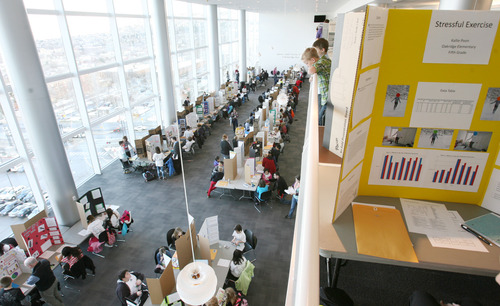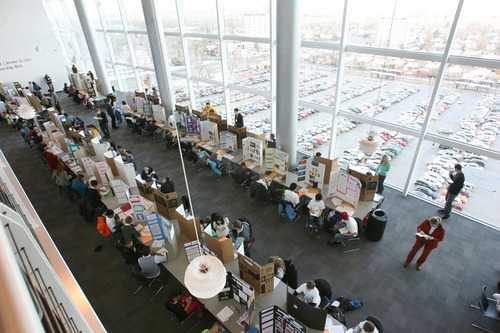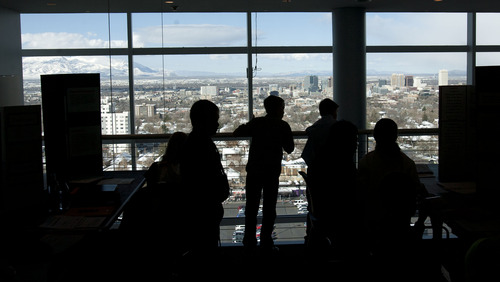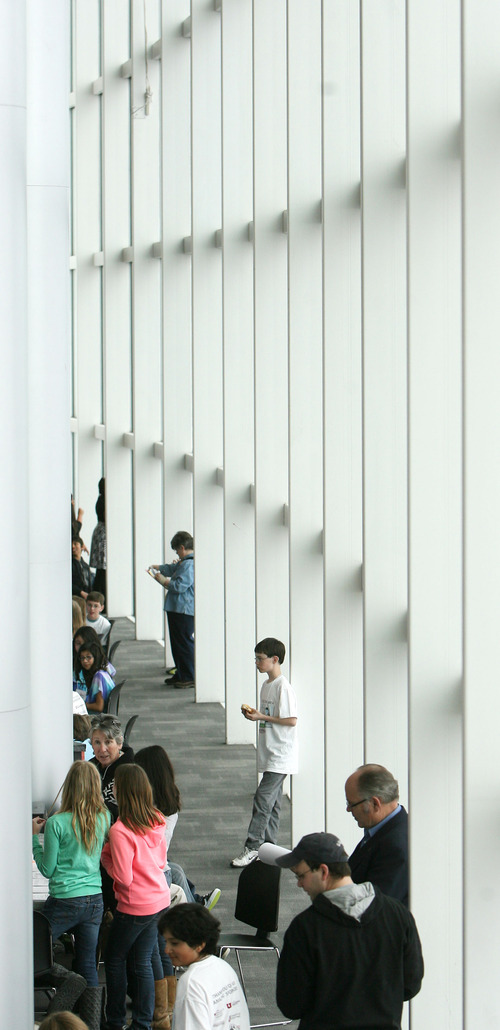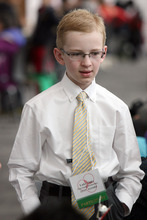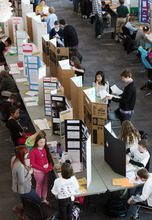This is an archived article that was published on sltrib.com in 2013, and information in the article may be outdated. It is provided only for personal research purposes and may not be reprinted.
Sixth-grader Maggie Lea explained her science project, Color Confusion, and the tri-fold board that showed her exposure to the scientific process: Ask a question about how the world works, test an idea, evaluate evidence — and perhaps discover how difficult it can be to find an answer.
Maggie tested how readers react when words and colors conflict.
"To test this, I got five boys and five girls, and I took them into a quiet room, one at a time, with no instructions, and I told them they were supposed to tell me what color the ink was, not what the letters read," she said Thursday.
"My results show that, yes, my hypothesis is correct, and card #2 and #3, where the ink and the letter the colors expressed were different, but I also guessed that card #3 took longer because the colors are so different ...."
Science fair judge Drew Ellingson, a University of Utah student majoring in math, asked: "So, if there's a conflict then your brain will try to read the word rather than say the color?"
"Yeah," Maggie answered, before further explaining her scientific process.
And so it went throughout Thursday with elementary students, and will continue Friday with secondary students, during the Salt Lake Valley Science and Engineering Fair inside Rice-Eccles Stadium at the University of Utah.
In many Utah public schools, science fairs depend on teachers to shoulder the extra work, said Jody Oostema, fair program manager, with the U.'s Center for Science and Mathematics Education. These unsung heroes supervise the students' research, raise the money for medals and tri-fold boards, and find judges — all on their own time, she said.
Now in its ninth year, she said, the Salt Lake Valley science fair has raised the scientific bar throughout the participating school districts.
"Each year we raise the requirements, so at this regional fair, you get the best of the best," Oostema said.
She said the projects this year were done almost on an equal basis by boys (357) and girls (345), so both genders were provided an entry to science, even those who might not consider themselves science fanatics.
Leslie Allen, a Canyons School District science specialist, said Naveen Rathi, of Hillcrest High School, spent a summer internship working on his project dealing with ovarian cancer. The title of his project was: Personalized Cancer Testing: Developing A Polydimethyl Siloxane (Pdms) Microfluidic Spotter System For In Vitro Drug Testing On Ovarian Cancer Patients.
"I can't even pronounce some of the words," Allen said with a smile.
With no statewide science fair, the Salt Lake Valley competition is one of four regional science fairs held at universities throughout Utah.
The top three high school experiments in the competition will be awarded grand prizes of $80,000 scholarships to Westminster College, while five students will be offered an all-expense-paid trip to the Intel International Science and Engineering Fair in Phoenix on May 5. The largest pre-college science fair in the world involves more than 1,400 students from about 40 countries who compete for $3 million in internships, grants, and prizes.
"The last five years, we've had Utah students place or get special awards [at Intel]," Oostema said.
The Salt Lake science fair awards ceremony will be held 7 p.m. Friday at East High School in Salt Lake City. —
Salt Lake regional science fair
The Salt Lake Valley Science and Engineering Fair, organized by the University of Utah's Center for Science and Mathematics Education, is an annual competition for students in grades five through 12 who attend a public, private or charter school in the Canyons, Granite, Murray, Park City, Salt Lake or Tooele school districts or the Salt Lake Catholic Diocese. Home-schooled students also are encouraged to participate.
702 Utah students participating
357 boys, 345 girls
474 individual projects
104 team projects (two or three students)
200 category judges, 40 special-award judges
75 volunteers
Information: slvsef.org



